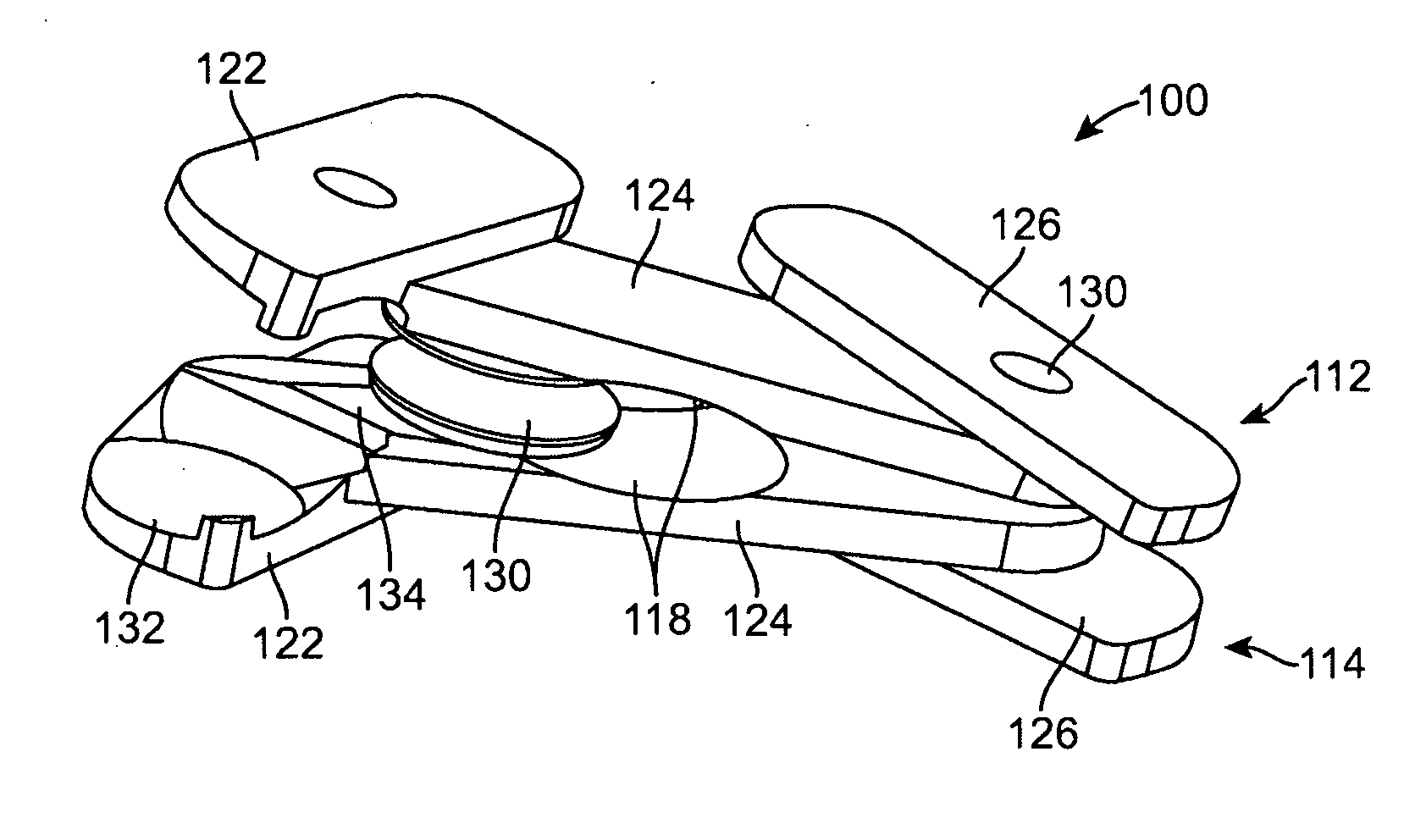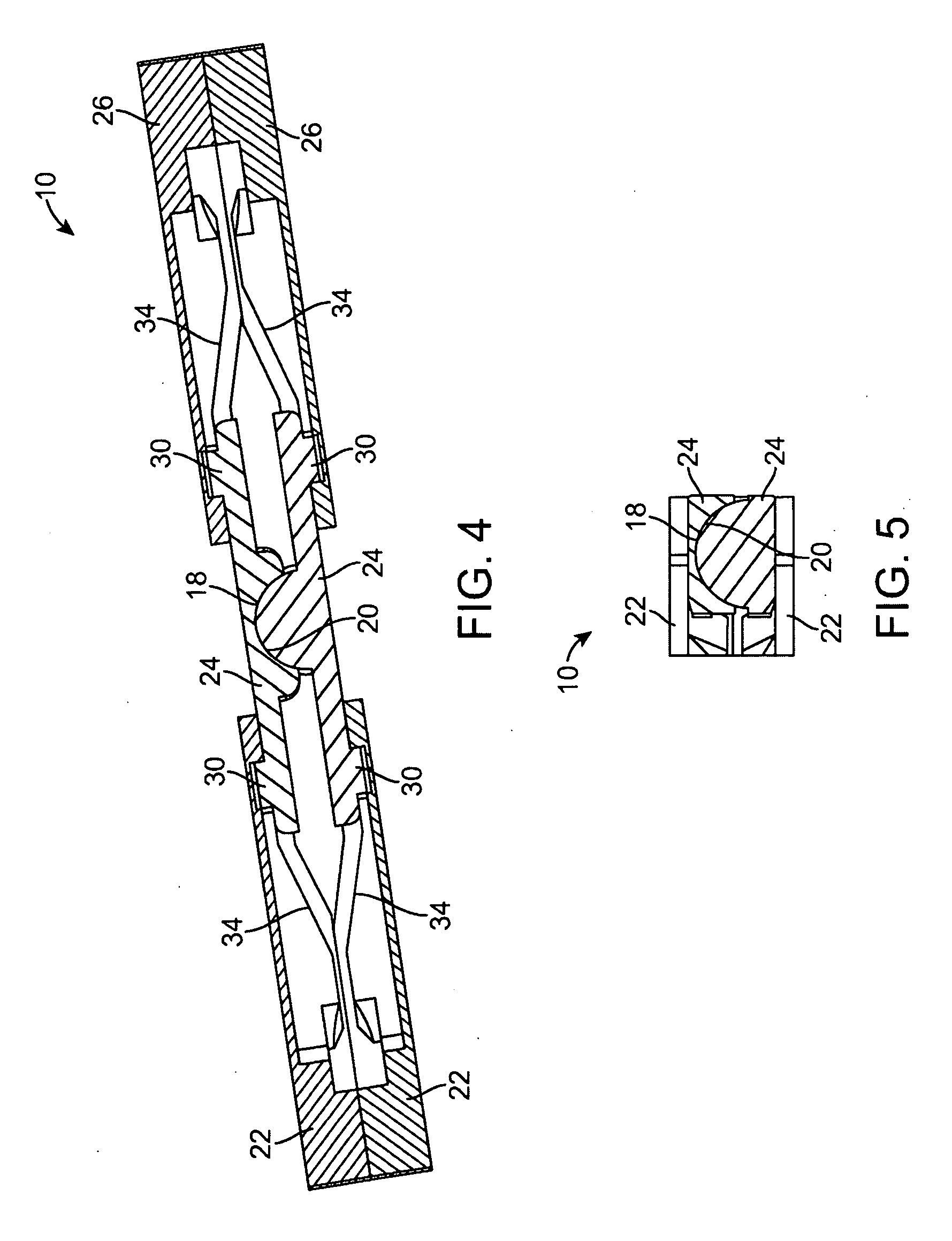Posterior Prosthetic Intervertebral Disc
a technology of intervertebral discs and prosthetic discs, which is applied in the field of medical devices and methods, can solve the problems of back pain, degeneration and/or dysfunction of one or more intervertebral discs, and the health and productivity of people around the world, and achieve the effect of increasing the disc height and increasing the disc heigh
- Summary
- Abstract
- Description
- Claims
- Application Information
AI Technical Summary
Benefits of technology
Problems solved by technology
Method used
Image
Examples
Embodiment Construction
[0027]The present invention provides an implanted intervertebral disc assembly which both restores motion and can be implanted from the back of the patient, thereby decreasing the invasiveness of the procedure. The posterior approach provides for a smaller posterior surgical incision and avoids important blood vessels located anterior to the spine particularly for lumbar disc replacements. The intervertebral discs described herein are designed to be suitable for either a PLIF or TLIF approach to the spine. These approaches require insertion of a device with a small insertion profile which can be expanded or assembled in vivo into a complete disc assembly.
[0028]PLIF stands for Posterior Lumbar Interbody Fusion. In the PLIF approach to the spine, the vertebrae are reached through an incision in the patient's back (posterior). The PLIF procedure involves forming a 3-6 inch incision in the patient's back and retracting the spinal muscles to allow access to the vertebral disc. The surgeo...
PUM
| Property | Measurement | Unit |
|---|---|---|
| Width | aaaaa | aaaaa |
| Height | aaaaa | aaaaa |
Abstract
Description
Claims
Application Information
 Login to View More
Login to View More - R&D
- Intellectual Property
- Life Sciences
- Materials
- Tech Scout
- Unparalleled Data Quality
- Higher Quality Content
- 60% Fewer Hallucinations
Browse by: Latest US Patents, China's latest patents, Technical Efficacy Thesaurus, Application Domain, Technology Topic, Popular Technical Reports.
© 2025 PatSnap. All rights reserved.Legal|Privacy policy|Modern Slavery Act Transparency Statement|Sitemap|About US| Contact US: help@patsnap.com



